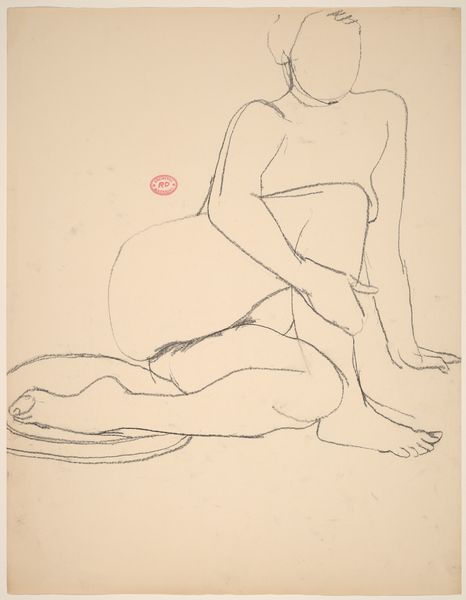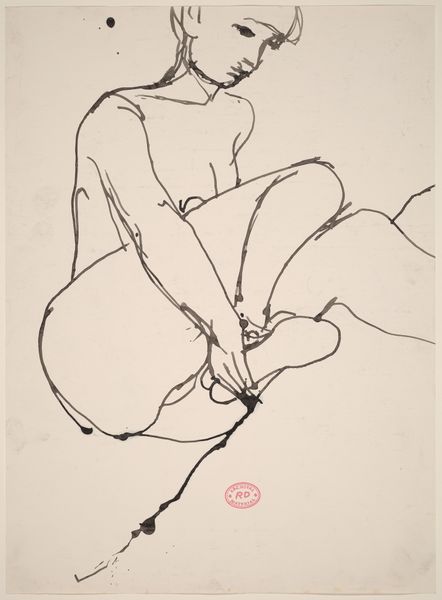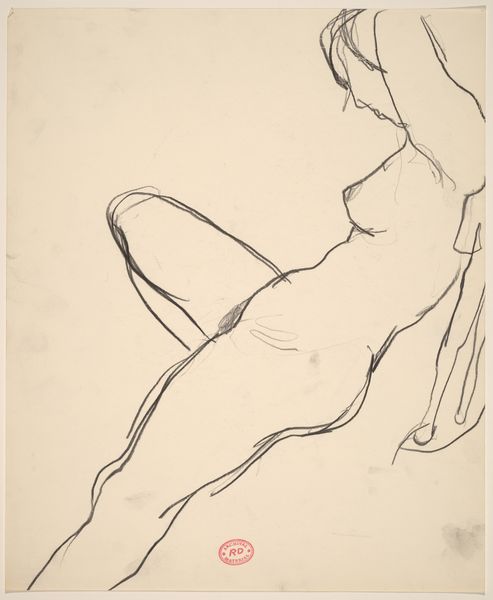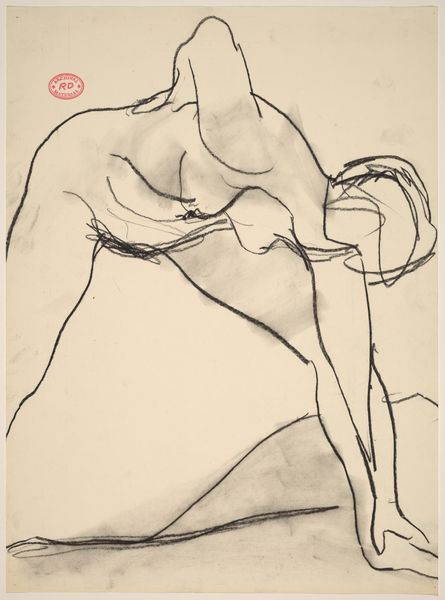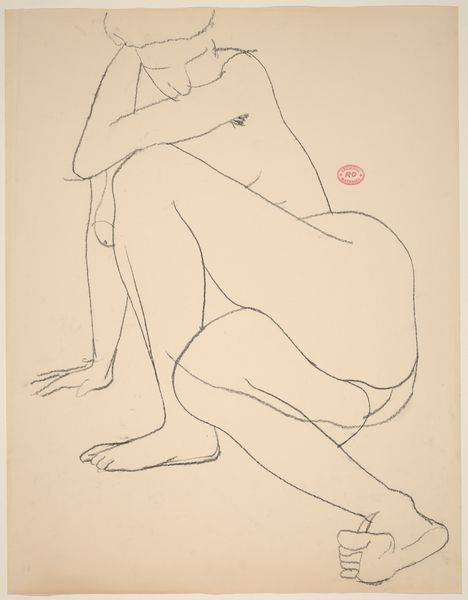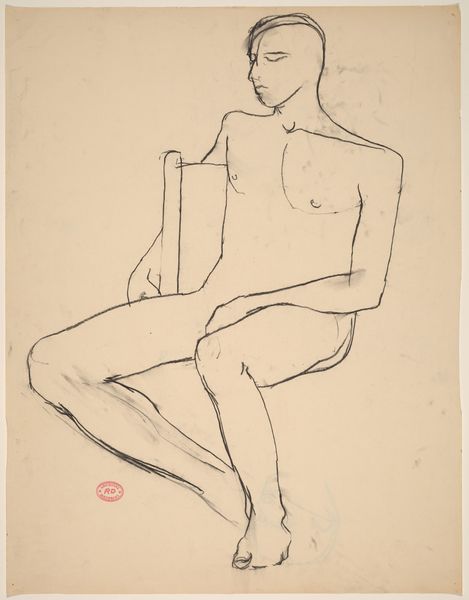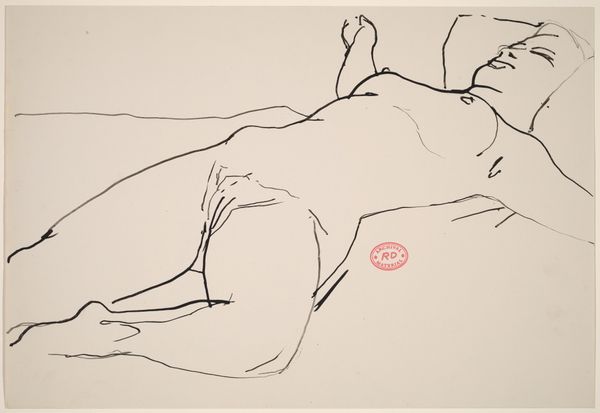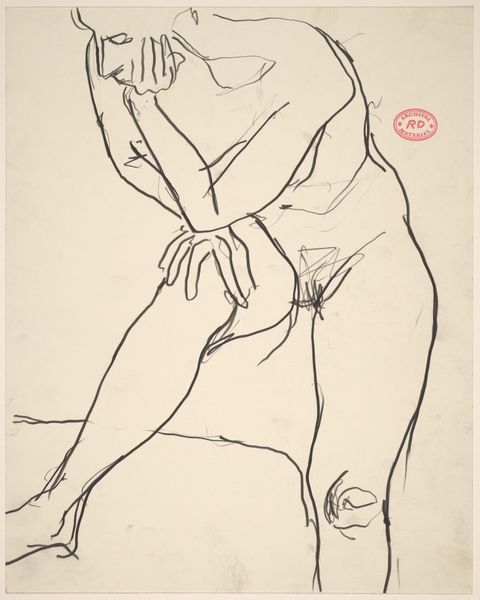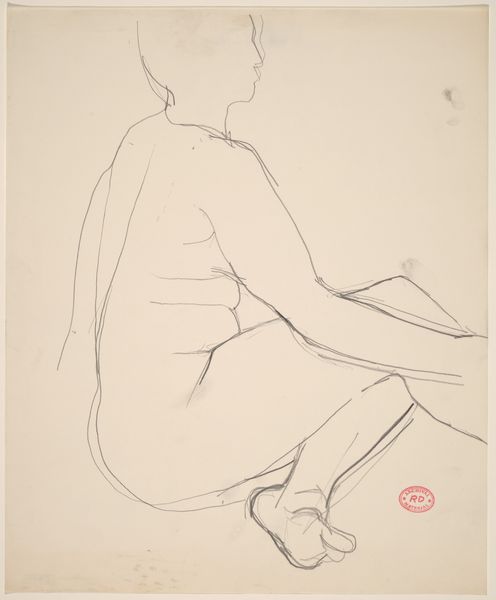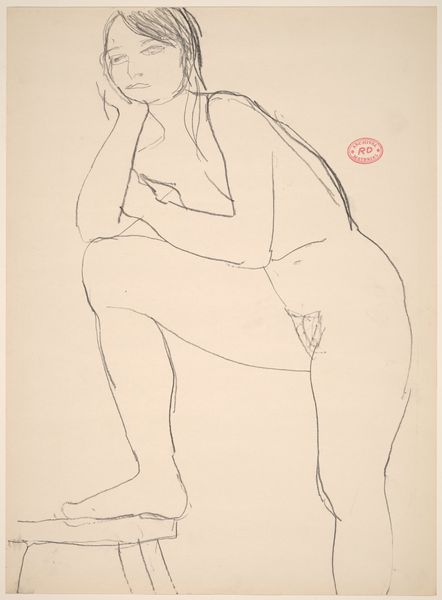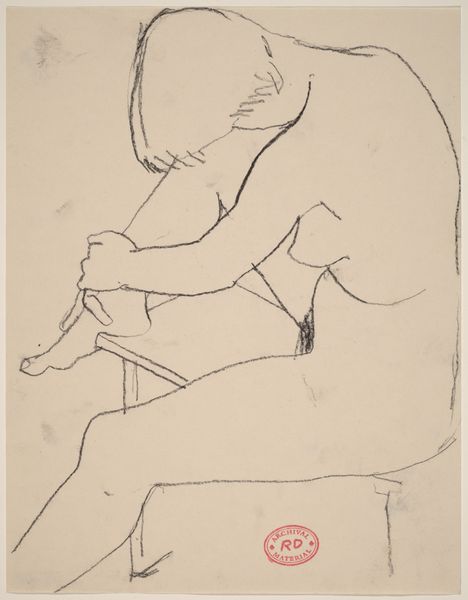![Untitled [model in sleeveless dress and shoes] by Richard Diebenkorn](/_next/image?url=https%3A%2F%2Fd2w8kbdekdi1gv.cloudfront.net%2FeyJidWNrZXQiOiAiYXJ0ZXJhLWltYWdlcy1idWNrZXQiLCAia2V5IjogImFydHdvcmtzLzczMTNiYmE1LTBhZTUtNGE5YS1hNTc2LTQ4NDIxOTNhYjcxZi83MzEzYmJhNS0wYWU1LTRhOWEtYTU3Ni00ODQyMTkzYWI3MWZfZnVsbC5qcGciLCAiZWRpdHMiOiB7InJlc2l6ZSI6IHsid2lkdGgiOiAxOTIwLCAiaGVpZ2h0IjogMTkyMCwgImZpdCI6ICJpbnNpZGUifX19&w=3840&q=75)
Untitled [model in sleeveless dress and shoes] 1955 - 1967
0:00
0:00
drawing, ink
#
portrait
#
drawing
#
ink drawing
#
figuration
#
bay-area-figurative-movement
#
ink
#
pencil drawing
#
line
Dimensions: overall: 63.8 x 49.1 cm (25 1/8 x 19 5/16 in.)
Copyright: National Gallery of Art: CC0 1.0
Editor: Here we have Richard Diebenkorn's "Untitled [model in sleeveless dress and shoes]", created sometime between 1955 and 1967, an ink drawing that feels both intimate and immediate. I’m struck by the simple, almost hasty lines, yet they manage to capture a sense of movement and weight. How do you interpret this work? Curator: I see a powerful interrogation of the female form through the lens of mid-century societal expectations. Diebenkorn uses line not just to depict, but to almost deconstruct the figure. The simplicity, as you noted, feels raw, like a challenge to the idealized depictions of women prevalent during that era. Do you notice how the facelessness and somewhat awkward posture resist a traditional male gaze? Editor: Yes, definitely. There’s something almost unsettling about the absence of a face and the way the body seems to be bending, not posing. It's like she's caught in a moment, not performing for anyone. Curator: Precisely. This contributes to its radicality. He subtly rejects the passive objectification so deeply ingrained in art history. Think of the social context: The burgeoning feminist movement was beginning to question these portrayals, and Diebenkorn, I believe, engages in that visual dialogue. What does this artwork suggest to you about identity? Editor: That's a great question. I guess it suggests identity is about more than just surface appearances – more than just the pose. The drawing seems to suggest the importance of seeing the individual beyond the constraints of the female gender role as it was being understood and contested in the 50s and 60s. Curator: Exactly! The drawing makes us question assumptions about representation itself. It highlights how even simple lines can become tools for challenging dominant narratives. I find that very powerful. Editor: I see it too, and never considered the relationship to the feminist movement of that time. It’s really changed how I view this piece.
Comments
No comments
Be the first to comment and join the conversation on the ultimate creative platform.
